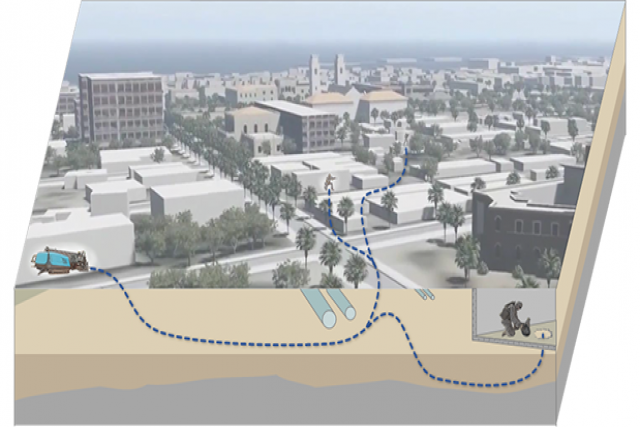DARPA Project to Rapidly Construct Tactical Tunnel Networks Completed

DARPA’s Underminer program has demonstrated the feasibility of rapidly constructing tactical tunnel networks that enable secure, responsive resupply in denied environments.
These networks could provide infrastructure for logistics support, such as pre-positioning supplies in advance of an operation or providing ongoing resupply as troops move through a contested area. The ability to rapidly bore tactical tunnels could also be helpful in rescue missions.
Adversaries, peer competitor nations, and allies around the world are building and exploiting tunnels for tactical operations. Tunneling capabilities exist in United States’ commercial applications – mostly in the oil/gas, utility, geological, and environmental sectors – but the U.S. Department of Defense is not currently taking advantage of such technologies or equipment to support tactical tunnel creation or exploitation.
“The technologies demonstrated in the Underminer program offered unique insight into applications for tactical tunneling networks,” said Andrew Nuss, Underminer program manager in DARPA’s Tactical Technology Office. “Through Underminer, DARPA has advanced the community’s use of high-speed tactical tunnel creation, sensing, and positioning.”
Three teams collectively produced and matured technologies for rapid tunnel creation with a focus on diameter, distance, speed, and accuracy.
- The Colorado School of Mines designed and demonstrated a continuous feed directional drilling concept that incorporated a hybrid drill bit system, an innovative drilling fluid management approach, and an intelligent drilling support system.
- General Electric Research Center developed and demonstrated a novel robotic approach consisting of multiple artificial muscle systems.
- Sandia National Laboratories implemented modifications to existing commercial hardware to demonstrate improvements to rate of penetration, accuracy and reduced operator demands.
“Tactical tunneling capabilities have tremendous opportunities to expand the combined arms maneuver trade space to include the vertical dimension in both natural and man-made subterranean environments,” added Dr. Nuss. “These unique capabilities have the potential to create secured logistics pathways in contested environments.”
Novel tunneling technologies and processes developed under the program have already transitioned to multiple industry and government partners. Some of those advances include an increased understanding of fluids management while drilling, localization of the drill bit without the use of beacons, and how to conduct branching operations while drilling at high rates of penetration.









